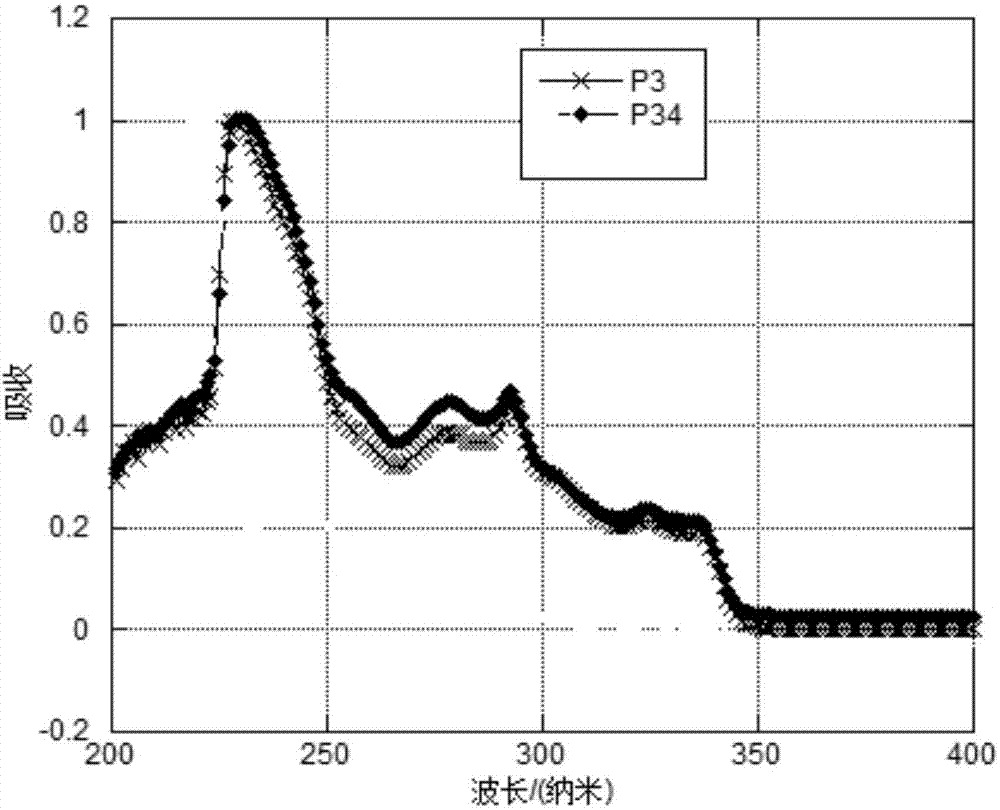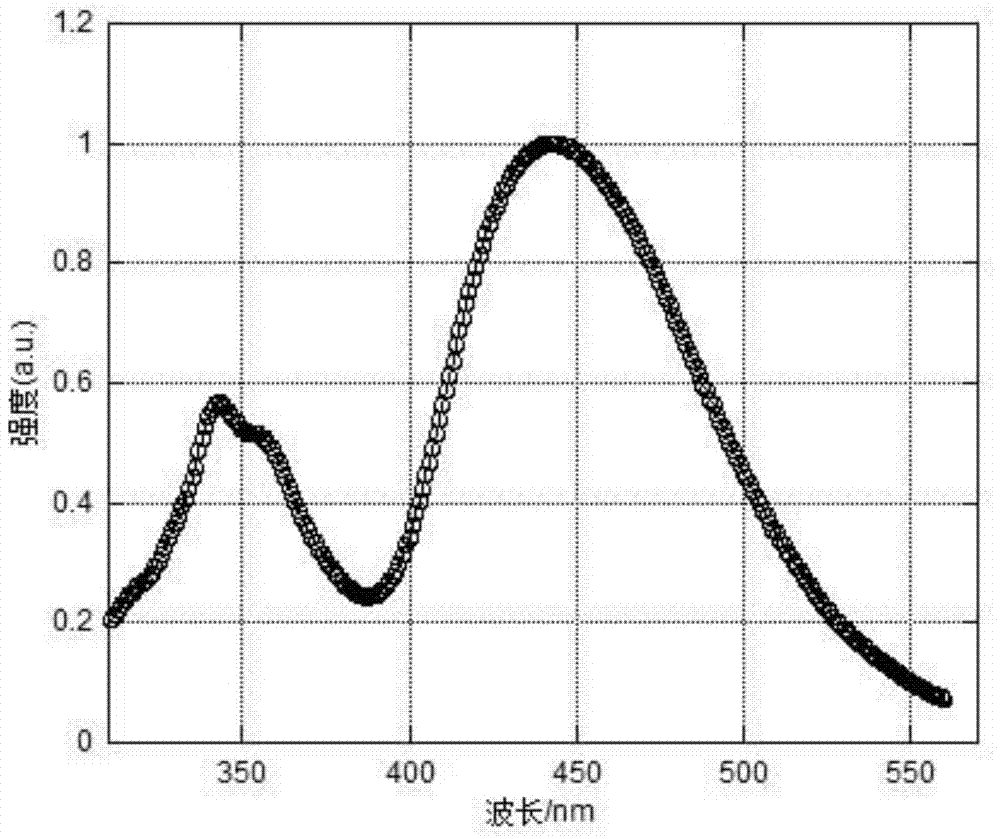Benzene-substituted phenothiazine unit-based luminescent material, intermediate thereof and organic photoelectric device made by luminescent material
A technology of phenophenothiazine and light-emitting materials, which is applied in light-emitting materials, electric solid devices, semiconductor devices, etc., can solve the problems of limited organic small molecule light-emitting materials, and achieve rich performance, high decomposition temperature, and low sublimation temperature Effect
- Summary
- Abstract
- Description
- Claims
- Application Information
AI Technical Summary
Problems solved by technology
Method used
Image
Examples
Embodiment 1
[0043] Preparation of intermediates of formula 1 and formula 2:
[0044] Add 3.98g (20mmol) of phenothiazine, 12.24g of iodobenzene (60mmol, 3equ) and 1.27g (20mmol) of copper powder into a 100ml three-neck flask, heat to 200°C and react for 12 hours. Unnecessary iodobenzene removes unreacted iodobenzene, obtains 4.9g product by the method of column chromatography, productive rate 89%, C 18 h 13 NS m / z = 275.08. Theoretical value: 275.08 (100.0%), 276.08 (20.4%), 277.07 (4.5%), 277.08 (2.0%) (note: the numerical percentage in brackets represents the corresponding estimated value of the corresponding mass-to-charge ratio m / z taking into account the isotope effect Ratio); Elemental analysis: C, 78.51%; H, 4.76%; N, 5.09%; S, 11.64%, the obtained product was confirmed as 9-phenylphenothiazine.
[0045] Under ice-cooling, in a 100ml three-necked flask, add the obtained 9-phenylphenothiazine (2.75g, 10mmol), add 30ml of chloroform as a solvent, add dropwise 3.2g of bromine water...
Embodiment 2
[0048] Preparation of intermediates of formula 3:
[0049]Add phenothiazine 3.98g (20mmol) and 6.26g p-bromoiodobenzene (22mmol, 1.1equ) and 1.27g cuprous iodide in 100ml three-necked flask, add solvent nitrogen nitrogen dimethyl formamide 100ml, heat to 200 ℃ of reaction for 24 hours, the reaction was completed, cooled, extracted with dichloromethane, obtained 2.47g product by the method of column chromatography, productive rate 35%, C 18 h 12 BrNS m / z = 352.99. Theoretical: 352.99 (100.0%), 354.99 (99.3%), 353.99 (20.4%), 355.99 (20.0%), 354.98 (4.5%), 356.98 (4.4%), 356.99 (2.1%), 355.98 (1.2%) ; Elemental analysis: C, 61.03%; H, 3.41%; Br, 22.55%; N, 3.95%; S, 9.05%.
[0050] Take 12.0 g of the above product and add it to 50 ml of dichloromethane and 25 ml of acetic acid, add 2.0 ml of hydrogen peroxide, and react overnight at 80 ° C. After the reaction is completed, the temperature is lowered, extracted with dichloromethane, and 32.12 g of the intermediate is obtained ...
Embodiment 3
[0053] Preparation of organic small molecule light-emitting materials based on benzophenothiazine units with structural formula P1:
[0054] Under nitrogen atmosphere, in 100ml flask, add the intermediate (0.93g, 2mmol) with structural formula 1 that embodiment 1 obtains, 15ml N,N-dimethylpropenyl urea, cuprous iodide (0.20g) potassium carbonate (0.700g) carbazole (0.701g, 1.05equ), 18-crown-6 (0.20g), nitrogen gas for 5min, 160°C temperature for 24h, the reaction was completed, then dichloromethane extraction, liquid separation, combined organic phase , dried with anhydrous magnesium sulfate, filtered with suction, and the resulting filtrate was desolventized under reduced pressure, dried in vacuo; column separation, with petroleum ether: dichloromethane = 2: 1 (volume ratio) through the column to obtain a white solid 0.71g , yield 56%, molecular formula: C 42 h 27 N 3 o 2 S, m / z=637.18. Theoretical value: 637.18 (100.0%), 638.19 (45.8%), 639.19 (11.0%), 639.18 (5.0%), 6...
PUM
 Login to View More
Login to View More Abstract
Description
Claims
Application Information
 Login to View More
Login to View More - R&D
- Intellectual Property
- Life Sciences
- Materials
- Tech Scout
- Unparalleled Data Quality
- Higher Quality Content
- 60% Fewer Hallucinations
Browse by: Latest US Patents, China's latest patents, Technical Efficacy Thesaurus, Application Domain, Technology Topic, Popular Technical Reports.
© 2025 PatSnap. All rights reserved.Legal|Privacy policy|Modern Slavery Act Transparency Statement|Sitemap|About US| Contact US: help@patsnap.com



